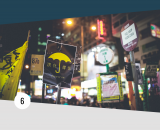Short Stories: Community Murals in the U.S.
When it comes to peace, walls are rarely the solution. Walls separate people and prevent dialogue. They build suspicion and unease. The examples are everywhere including Northern Ireland, the West Bank, and Berlin. Yet, walls can also serve as a canvas. While graffiti and street art in the United States have long been considered a consequence of crime, the past 30 years have seen an evolution of those attitudes. Communities are embracing the role of street art to unite rather than divide.
The city of Philadelphia’s Mural Arts Program, founded in 1984, is one such initiative that is reimagining the world around them. The program began as a way to redirect the energy of graffiti artists toward community art projects rather than acts of public defacement and is today a network of 2,000 yearly participants contributing to projects across the city. The results are tangible: murals including Women of Progress, Common Threads, and Billiards – A Tribute to Edward “Chick” Davis, all art that seeks to generate dialogue
with the community about race, gender, and legacy in a city with a history of violence and racism. Murals also give a face to the often-forgotten or ignored communities in the urban sprawl by incorporating their likenesses and heritage into the tapestry of the cityscape. They serve as a beacon of inclusion in a sea of monolithic structures.
Yet this is only half the story, because—like all forms of art—the process is as important as the finished product. Murals are an inherently collaborative effort due to their sheer size, and when hundreds of individuals come together to make art, great things happen. Communities are strengthened, skills are given an outlet and a purpose, and participants create a sense of belonging where there was once isolation. Positive change can be made one brush stroke at a time.
(Feature photo credit: “Mural” by Alex Abboud (CC BY-NC-SA 2.0))

